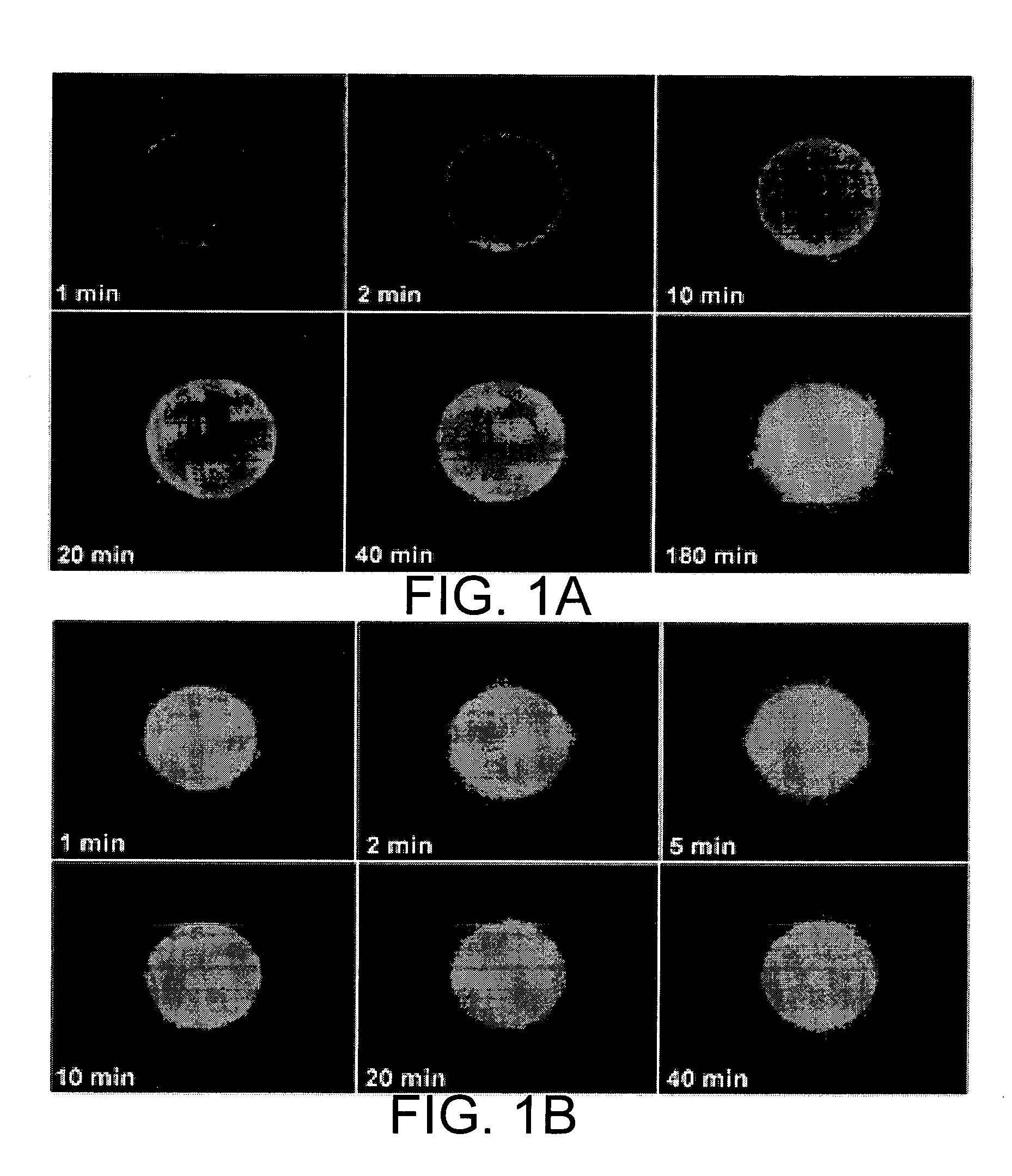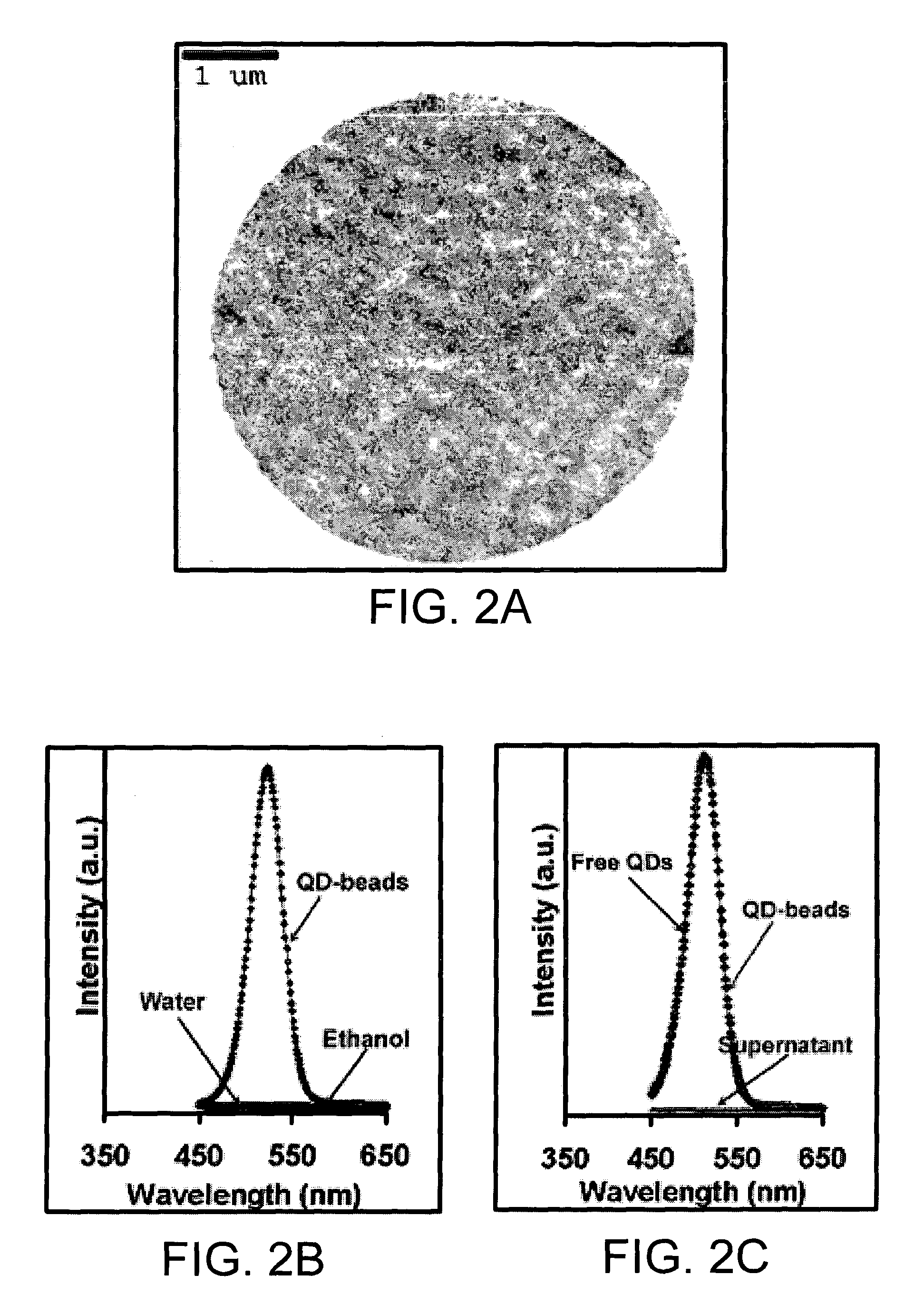Porous materials embedded with nanospecies, methods of fabrication thereof, and methods of use thereof
a nano-species and porous material technology, applied in the field of porous materials, can solve the problems of severe limitation on the number of different color organic dye molecules which can be utilized simultaneously or sequentially, and the use of organic dyes for fluorescent labeling systems, and achieve the difficulty of simultaneously or even non-simultaneously detecting or discriminating between the presence of a number of numbers
- Summary
- Abstract
- Description
- Claims
- Application Information
AI Technical Summary
Benefits of technology
Problems solved by technology
Method used
Image
Examples
example 1
[0072]True-color fluorescence images of mesoporous silica beads (about a 5-μm diameter, about a 32 nm pore size) doped with single-color quantum dots emitting light at about 488 nm (blue), about 520 nm (green), about 550 nm (yellow), about 580 nm (orange), or about 610 nm (red) have been produced. These beads are considered “monochromatic” because they were prepared by using single-color quantum dots, and were mixed and spread on a glass surface for fluorescence imaging. Although only a single light source (a near-UV lamp) was used for excitation, all the doped beads were observed and were clearly distinguishable. It is worth noting that simultaneous excitation of multiple emission colors is a unique property of quantum dots, and is not possible with organic dyes or lanthanide compounds. The quantum dot-doped beads are remarkably bright, and can be recorded by using a digital color camera and a mercury lamp. Quantitative measurements indicate that these mesoporous beads are about 50...
example 2
[0084]True-color fluorescence images of doped with single-color quantum dots (about a 15-μm diameter) doped with single-color quantum dots emitting light at about 488 nm (blue), about 520 nm (green), about 550 nm (yellow), about 580 nm (orange), or about 610 nm (red) have been produced. These beads are considered “monochromatic” because they were prepared by using single-color quantum dots, and were mixed and spread on a glass surface for fluorescence imaging. Although only a single light source (a near-UV lamp) was used for excitation, all the doped beads were observed and were clearly distinguishable. It is worth noting that simultaneous excitation of multiple emission colors is a unique property of quantum dots, and is not possible with organic dyes or lanthanide compounds. The quantum dot-doped beads are remarkably bright, and can be recorded by using a digital color camera and a mercury lamp.
[0085]FIG. 4 illustrates a two-dimensional density plot showing classification of the t...
PUM
| Property | Measurement | Unit |
|---|---|---|
| diameter | aaaaa | aaaaa |
| red wavelengths | aaaaa | aaaaa |
| pore size | aaaaa | aaaaa |
Abstract
Description
Claims
Application Information
 Login to View More
Login to View More - R&D
- Intellectual Property
- Life Sciences
- Materials
- Tech Scout
- Unparalleled Data Quality
- Higher Quality Content
- 60% Fewer Hallucinations
Browse by: Latest US Patents, China's latest patents, Technical Efficacy Thesaurus, Application Domain, Technology Topic, Popular Technical Reports.
© 2025 PatSnap. All rights reserved.Legal|Privacy policy|Modern Slavery Act Transparency Statement|Sitemap|About US| Contact US: help@patsnap.com



